Recently, CNN featured a photograph of a blackbird riding the back of a bald eagle, an image the correspondent called “almost too cute to be real.” The story fortunately went on to note that this was not a joyride, but the blackbird driving away an intruder.
While the photo is extraordinary, the behavior is not. I suspect most birders and backyard nature enthusiasts have seen numerous examples of a small bird – or flock of small birds – attacking a much larger and more imposing hawk, owl, or heron.
You may wonder what exactly would prompt a chickadee to take on red-tailed hawk. And, perhaps: how do the little birds survive such antics? Why doesn’t the hawk just grab an easy meal?
Here’s a primer on the avian dramas playing out in your neighborhood.
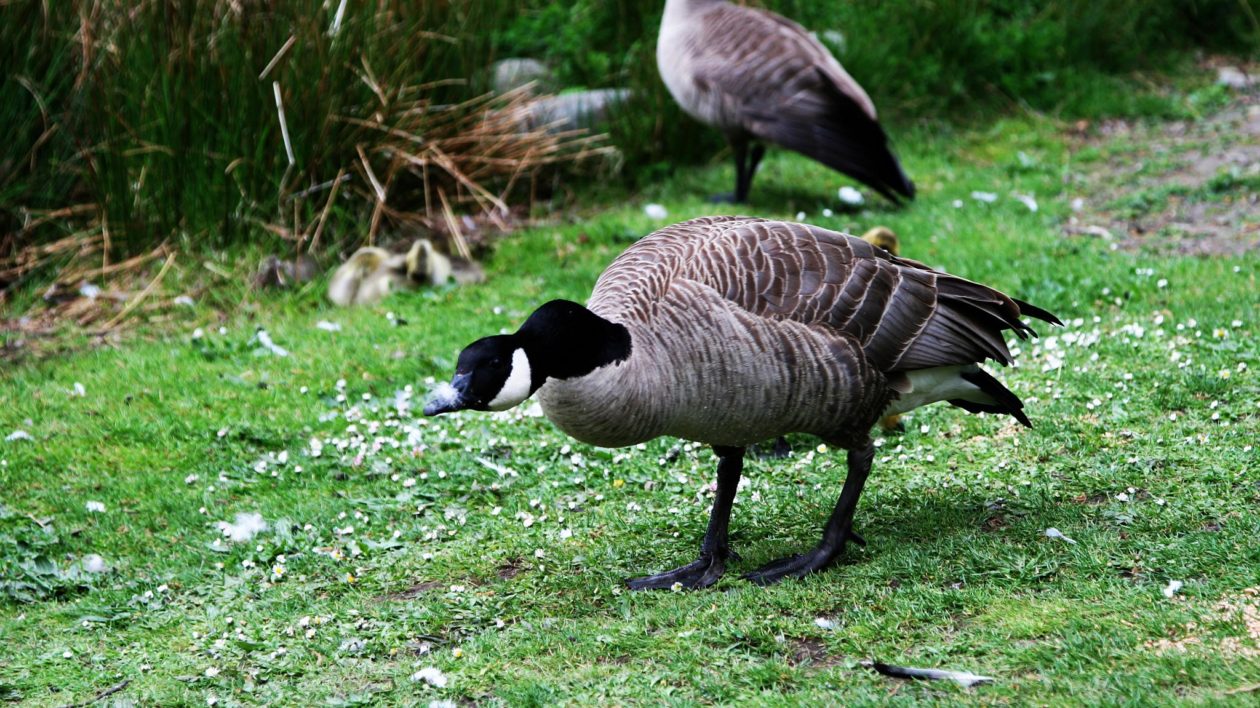
Defend The Territory
Many bird species are territorial during certain times of the year, and even small birds will fiercely defend their space. The reasons for territoriality vary. Some male birds set up territories to attract mates, and will fiercely drive off any rivals.
Other birds will set up on an abundant food source and become aggressive against intruders. Mockingbirds, for instance, will guard a berry tree in the fall. As Mass Audubon notes, “If there are bird feeders within a mockingbird’s feeding territory, other birds will be driven off, even though the mockingbird has no interest in the food offered at the feeder.”
But most birds are territorial to protect their nests. Birds will aggressively dive bomb any potential predator, large or small. This includes nest raiders like blue jays and avian predators like hawks, as well as cats, dogs and humans.
Even a seemingly innocuous robin can look quite fierce as it squawks and dive bombs your head. One set up a nest just off our back porch this summer, and its attacks were sufficient to deter my young son’s curiosity about the nestlings.
On a spring foray at dusk to try to catch a grass carp in an urban pond (don’t ask), I came a bit too close to a well-hidden Canada goose nest. The female came roaring out of the brush, hissing and flapping. On the terror scale, it may as well have been a grizzly bear.
In Australia, the “swooping season” of Australian magpies is almost a rite of passage, with bicyclists and walkers often subject to dramatic ambushes by these angriest of birds. And while this may be annoying or even scary for a human, it’s no doubt an effective deterrent. It would take a formidable predator to risk the pecking and battering of an enraged mama goose or magpie.
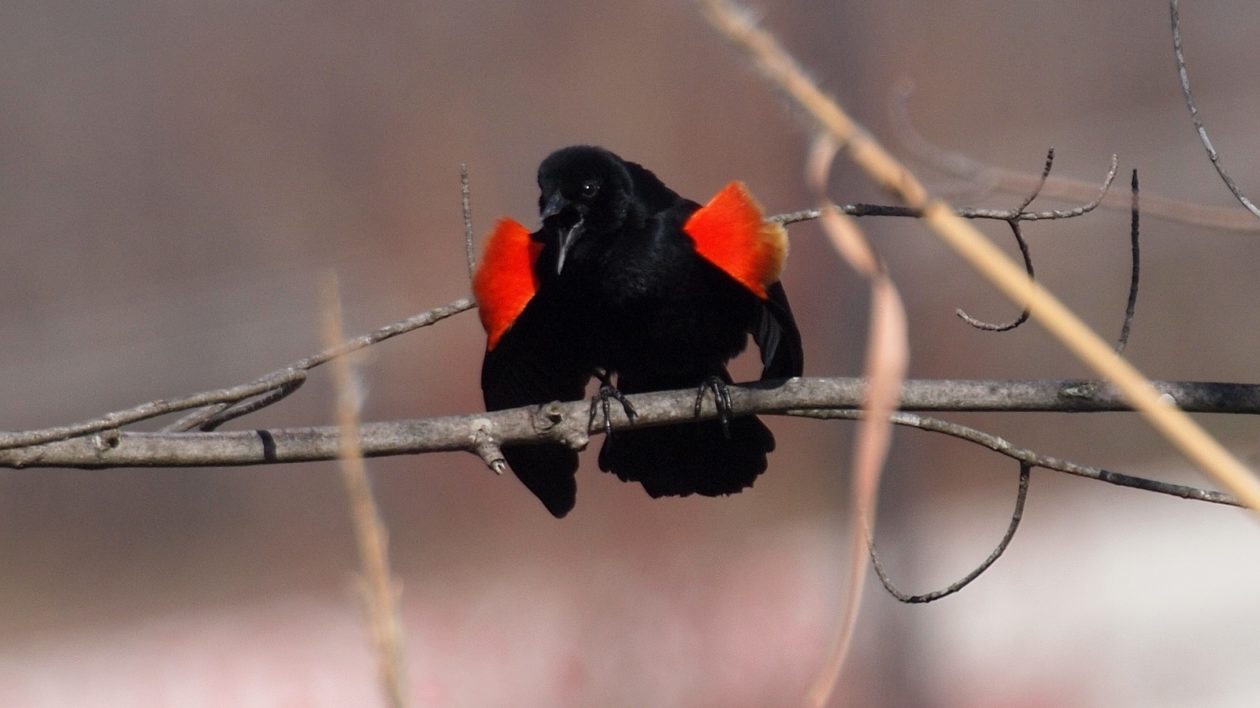
Red-Winged Warning
The red-winged blackbird – the bird photographed “riding” an eagle – exhibits particularly fascinating territorial behavior. Males set up territories where they call and display their red wings. As the Cornell Lab of Ornithology notes, as males mature, their black feathers get glossier and the red wings get brighter. The birds also do a flight display over their territory, flying at slow speed for a more dramatic display. According to the Lab’s publication All About Birds, “Older males secure the highest quality territories and the fittest mates. In experiments, males with blackened epaulets often lose their territories.”
Despite their territorial natures, red-winged blackbirds feed in large flocks in fields. To avoid unpleasant fights at dinner, male blackbirds tuck in their wings and don’t display at these times.
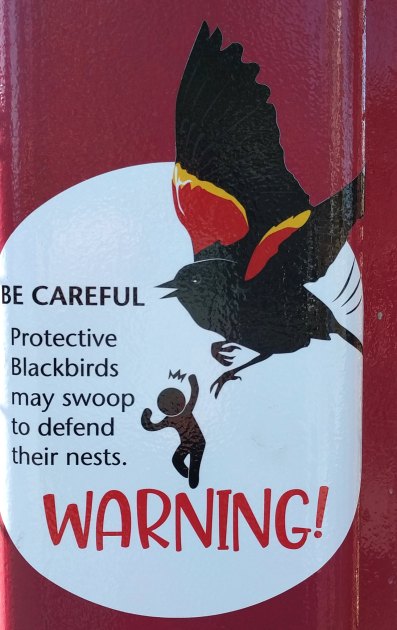
Back at its display ground, a red-winged blackbird will fend off rivals of its own species at its territory, but like many birds, will also drive away just about anything that gets near. Including bald eagles. And humans. Similar to other birds, though, red-winged blackbirds adapt their defensive strategies to the situation.
I frequently run along a greenbelt trail near my home in Boise, going by several blackbird display areas. I’ve never been attacked. The birds see joggers, walkers and bikers all day long. If they dive bombed every human, that’s all they’d do all day (and they’d probably lose their territories to less aggressive blackbirds).
However, I once did a 9-mile summer run along a very rural Iowa road. Judging by the honks and looks of passing cars, jogging was a far less common pastime there. And red-winged blackbirds dive bombed me along much of my route, and with relentless fury. I was large and threatening, and as such needed to be driven out of the territory.
Mob Mentality
Of course, it makes sense that birds would attempt to deter predators close to nests. But you may notice that a small bird (or flock of small birds) often chase and harass large hawks high in the sky, obviously far from any nests. Why?
Ornithologists say that there is a lot going on when birds mob a hawk, owl, heron or other large bird. The very presence of a bird of prey presents an existential threat to the avian neighborhood. As long as that bird’s around, nestlings are not safe. A red-tailed hawk could swoop out of the sky and snatch a baby bird before the parent even knows it’s gone.
The best defense, to invert the old sports cliché, is a good offense. And for small birds, going on the offensive means letting all other birds know that there’s danger overhead. Once the small birds know, they won’t be safe until they drive the danger away.
A mob of small birds makes it difficult for a hawk to hunt. And this is more than just an alarm: The bird sounds are also a call to arms (or…wings?) to all other small birds, regardless of species. The Cornell Lab explains: “The mobbing birds tend to use similar-sounding call notes, regardless of their species, and this may act to recruit other individuals to form a mobbing flock.”
Cornell also notes that this call is one familiar to birders, the “pishing” sound that draws in a variety of species. (It’s also why birders should not over-use this technique, as it can draw birds away from their nests).
Owls also draw bird mobs. At night, nesting birds are relatively defenseless. During the day, they can attempt to mob the owl until it moves away. Crows have a particularly violent reaction to owls, and as the cawing gets louder, more crows get drawn into the fray. I have seen more than 100 mob a single great-horned owl.
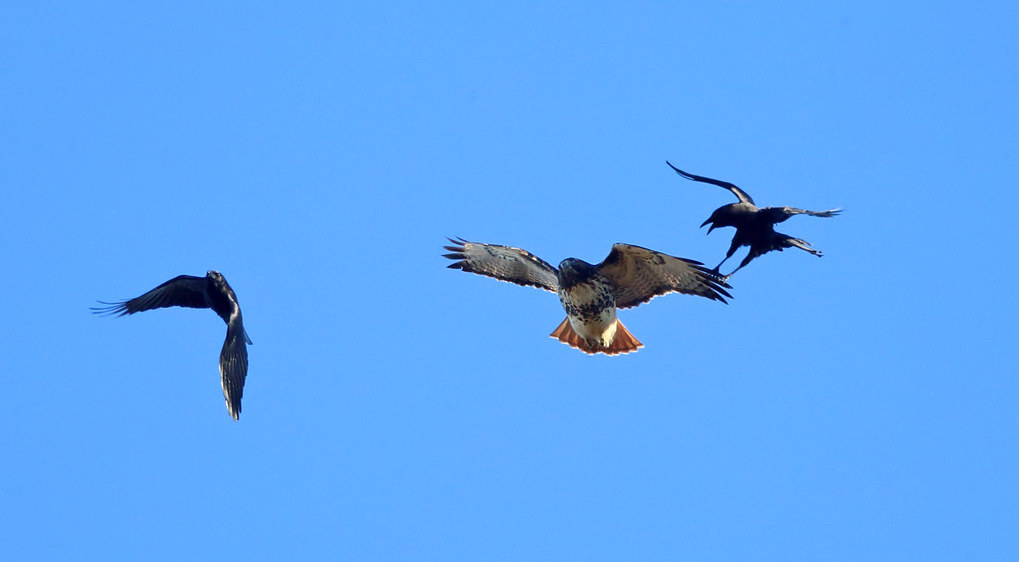
Why Don’t the Hawks Just Kill the Smaller Birds?
Let’s face it, a red-tailed hawk versus an American robin is hardly a fair fight. Even a mob of small birds would seem no match for a raptor with sharp talons. And yet small birds routinely chase and even make physical contact with their avian predators.
People witnessing these small bird attacks often ask: “Why doesn’t the hawk just kill the little birds?”
From the ground, it looks like it would be easy.
It isn’t. First, most predators rely on stealth attacks to catch prey. A raptor swoops from above and catches unaware prey. Alert prey is much, much more difficult to catch. This is true whether it is a wildebeest on the Serengeti, or a blue jay in your backyard. A prey species aware of its predator can use a full range of tactics to get away.
Add to this the fact that small birds are just more maneuverable than a large hawk or owl. If you look closely, you will see the small birds darting around, quickly shifting position. It takes a lot of energy for a soaring hawk to catch up to such a bird. This is even more true if the bird is roosting.
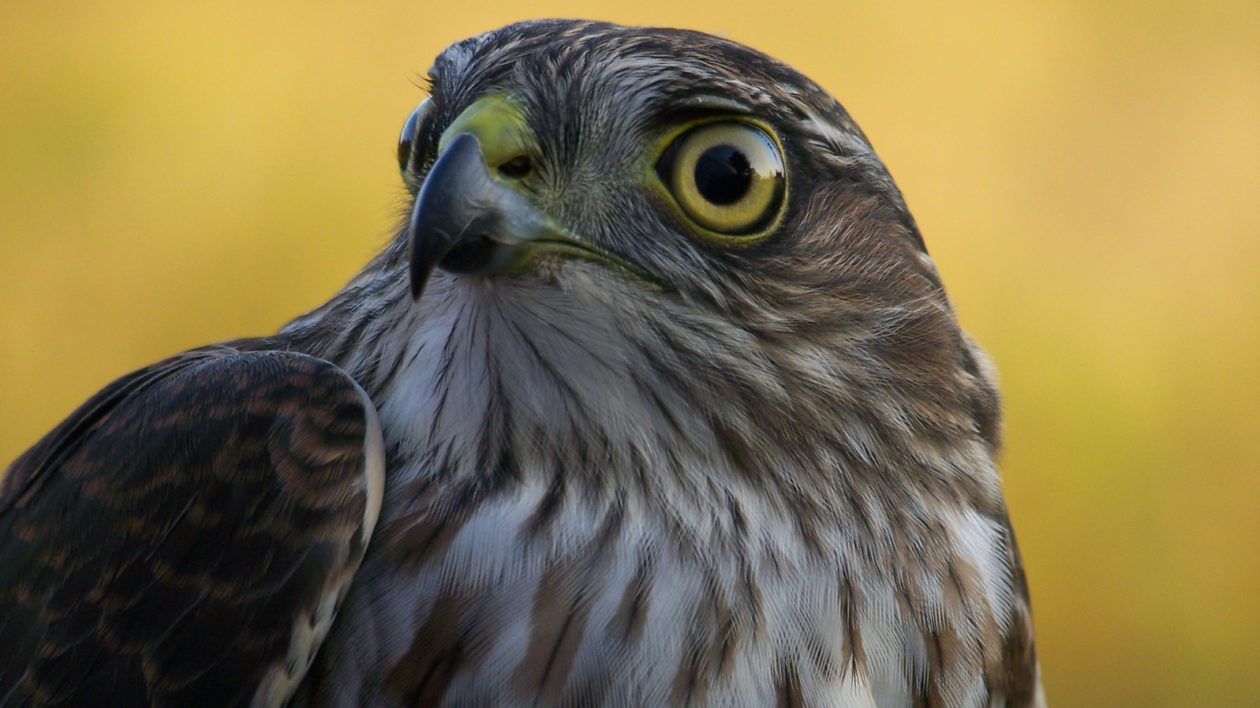
If you keep track of your observations, you’ll notice that the songbirds are nearly always mobbing larger predators, birds like red-tailed hawks and ospreys (even though ospreys usually prey on fish). A red-tailed hawk is a threat to nestlings but it’s unlikely to pluck a bird out of the sky.
Mobbing an aerial acrobat like a Cooper’s hawk – a raptor that can quickly negotiate suburban shrubs and trees – is a much riskier gamble. When a Cooper’s hawk is hunting in my neighborhood, the birds still raise the alarm cry quite loudly – but they’ll stay hidden while they do so.
Occasionally, you will see a red-tailed hawk grab a songbird. And great-horned owls will catch the occasional crow. When this happens, the songbird mob goes absolutely bonkers. It’s akin to a referee making a bad call against the home team. The ruckus draws even more birds to the mob.
In short, once a hawk or owl is mobbed by birds, the area is no longer a happy hunting ground. The predator will spend more energy getting prey than it is worth. And while it may not seem like a fair fight, the odds in this instance are stacked in the little bird’s favor.
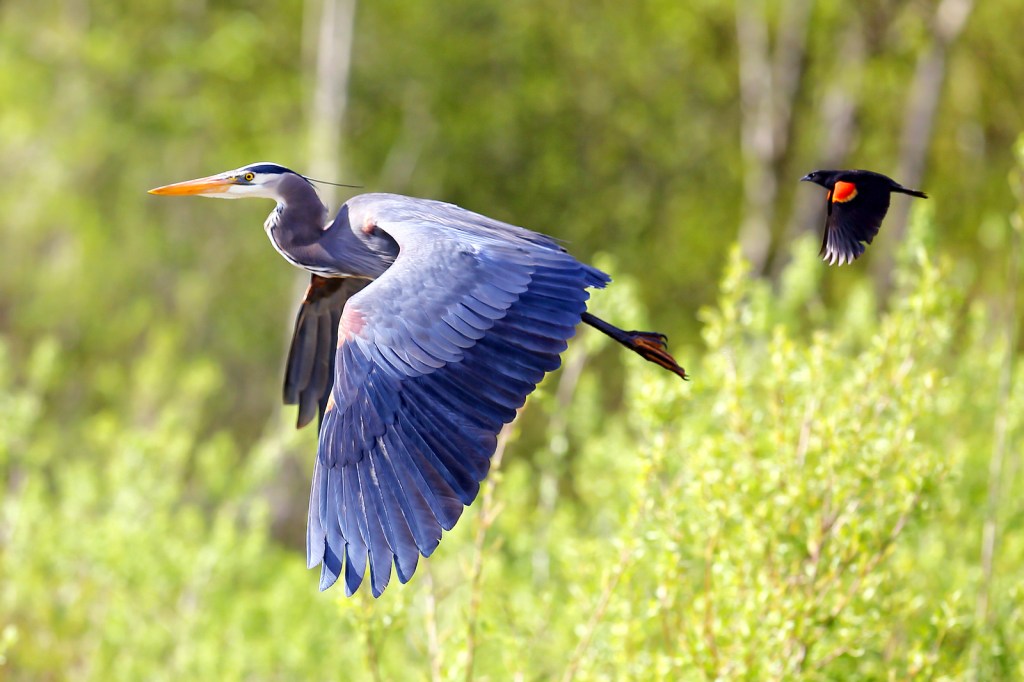



It is not only large birds of pray that get attacked. I once saw a young Kestrel get killed by a peck on the head by a robin!
I saw a hummingbird challenge a red tailed hawk in our park. It was quite spectacular. I often see doves, sparrows, etc. taking on hawks around where I live although as described in the article when a stringer hawk was drawn to my yard by the bird feeder, the small birds just screamed from the safety of the bushes .
WOW! A hummingbird attacking a hawk. Incredible.
Great article, thank you.
Very interesting article
Answered some questions I had
Here in Florida I do see fish crows chasing ospreys
In the fall I have often observed the crows attacking Osprey. Shortly thereafter the Osprey disappeared.
Once while birding on a local rail trail (pond nearby with resident Canada geese) I had one start intercepting me on my path with that “I’m gonna get you” look. I wasn’t about to run – he would have been on my back, so I kicked at him as he approached. I’ll tell you- kicking a goose in the chest is like kicking a brick wall. I guess my upper arms would be tough too and less flabby if I used them like the geese use their flight muscles!! The kick worked and he took off. Another wildlife experience ?
So very informative. Thankyou for the article
The article explaining the mobbing techniques of smaller birds against larger birds of prey was very fascinating. I couldn’t stop reading. It answered several questions I’ve had. Thank you so much!
I my SoCal neighbourhood the crows (ravens?) come in a large flock and destroy the songbird nests and steal the eggs. They decimate the songbirds here, yet the crows are protected. I see why they are called a “murder” of crows. What can I do to scare them off?
The first time I saw mobbing a red winged black bird pecked a crow squarely on the back of the head .the crow fell from the sky flopped around a bit then flew away! Just last week I saw a tree sparrow actually land on the back of a huge red tail and peck for several seconds before flying away .the swallow had a baby in vicinity
Very interesting and informative!!
Thank you!
Pamela Taylor
Thank you for this information. I have been curious about this for years!
I try to chase away hawks on my backyard placing a CD on top of the feeder. The little birds are very smart and knows how to hide but the cute doves…they are so dumb, poor creatures. I’ve noticed a lot of hawks around this time of the year also. Would like to know why. Go little birds!!!
Thanks very much! I had no idea that birds of different species may join together to mob perceived threats, and I’d also wondered why the predators run when being chased by even a single smaller bird. Now I know.
I have a experience with red-wing black birds on my bike.But I found that using a umbrella while I’m biking usually solve the problem.It seems that they do not like umbrellas.Now I can ride my bicycle bird free.But riding a bike with one hand and the other hand on my umbrella creates a problem at times.